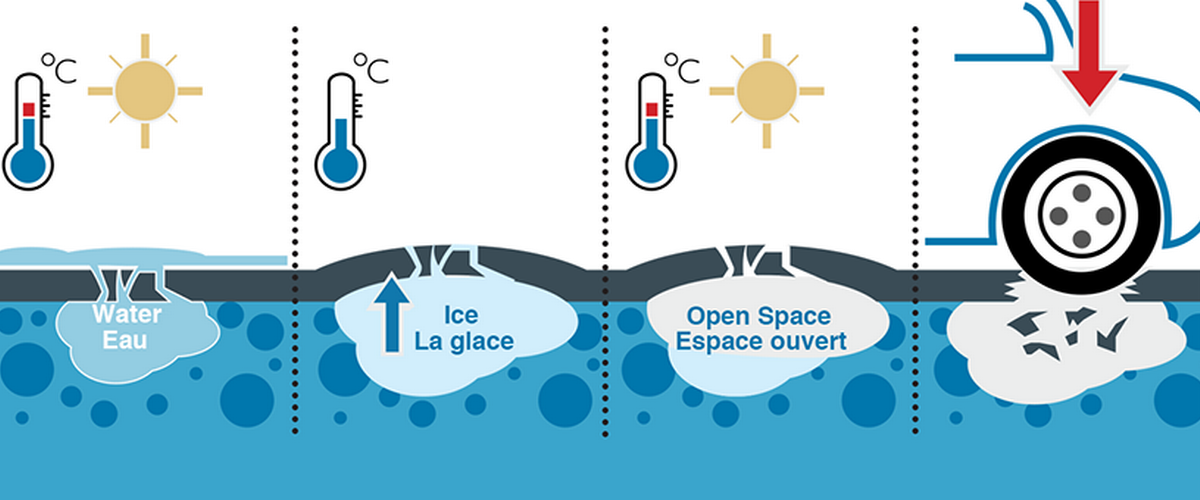Potholes

Potholes are formed when water gets below the surface of the road through cracks in the pavement and then expands and contracts.
When it’s cold, the water freezes and expands causing the pavement to bend or crack. Then when the weather gets milder, the ice melts and the pavement contracts, leaving areas where more water can get in. If this freeze/thaw cycle happens many times, the road can become very weak.
Regular weight of traffic passing over weakened areas can cause the surface of the road to collapse which causes potholes.
Due to this freeze-thaw cycle, pothole issues are most common in the late winter and early spring.
How Does the City Fix Potholes?
The City uses private contractors in addition to its own crews to patch potholes year-round. Patching efforts typically ramp-up during the late winter and early spring periods as needed.
We predominantly use hot mix asphalt patching, cold mix patching or recycled asphalt patching depending on the time of year.
Hot mix patching is the more cost effective form of pothole repair. However, during the winter, local asphalt plants shut down, therefore cold mix patching and recycled asphalt patching is used.
Cold mix can be applied directly under all weather conditions, but is susceptible to road bed movement, vehicle traffic and snow removal operations.
Report a Pothole
Contact us by calling 311, report a pothole 24 hours a day online at 311.greatersudbury.ca or live chat Monday to Friday from 7:30 a.m. to 6 p.m.
We'll need:
- Street name
- Nearest address
- Which lane the pothole is in (right lane, left lane)
All-In-One Pothole Patching Machine (APPM)
Traditional pothole patching crews comprise of three to five workers and several pieces of equipment. The crew size is largely dependent on the traffic control required for the roads that work is performed on. A pothole patching crew may apply two to four tons of asphalt per day depending on weather / road conditions. The APPM carries five tons of asphalt and is operated by one staff member. Depending on the road (i.e. posted speed and number of lanes), the APPM may be able to operate by itself or be accompanied by a blocker truck.
During the winter months, the APPM can be used on Class 1-3 Roads (i.e. MR designated roads) as they are maintained to a bare / near-bare state, depending on weather. Since asphalt plants are closed during the winter months, the APPM will mainly use cold mix and recycled mix asphalt for its pothole patching operation.
In the summer months, the APPM will use hot mix asphalt and operate on any city road requiring pothole patching on a priority basis.
Overview:
- Quality patches -- hydraulic pressure is used to clean potholes and compact material placed in patches. Under ideal conditions (i.e. summer weather), patches may outlast the surrounding pavement surface
- Repairs utility cuts and long cracks in one continuous operation - channeling the asphalt into the crack and compacting it on-the-go
- Controlled amount of asphalt can be delivered to a precise location
- Dispenses all standard hot or cold asphalt mixes
- Keeps hot mix asphalt hot and warms cold mix asphalt
Vehicle Damage from Potholes
If you have experienced vehicle damage as the result of a pothole you may file a Notice of Claim with the City.
To lessen the chances of pothole damage to your vehicle:
- reduce speed,
- maintain optimum tire pressure and
- keep the steering wheel straight and avoiding sudden braking when encountering a pothole.
